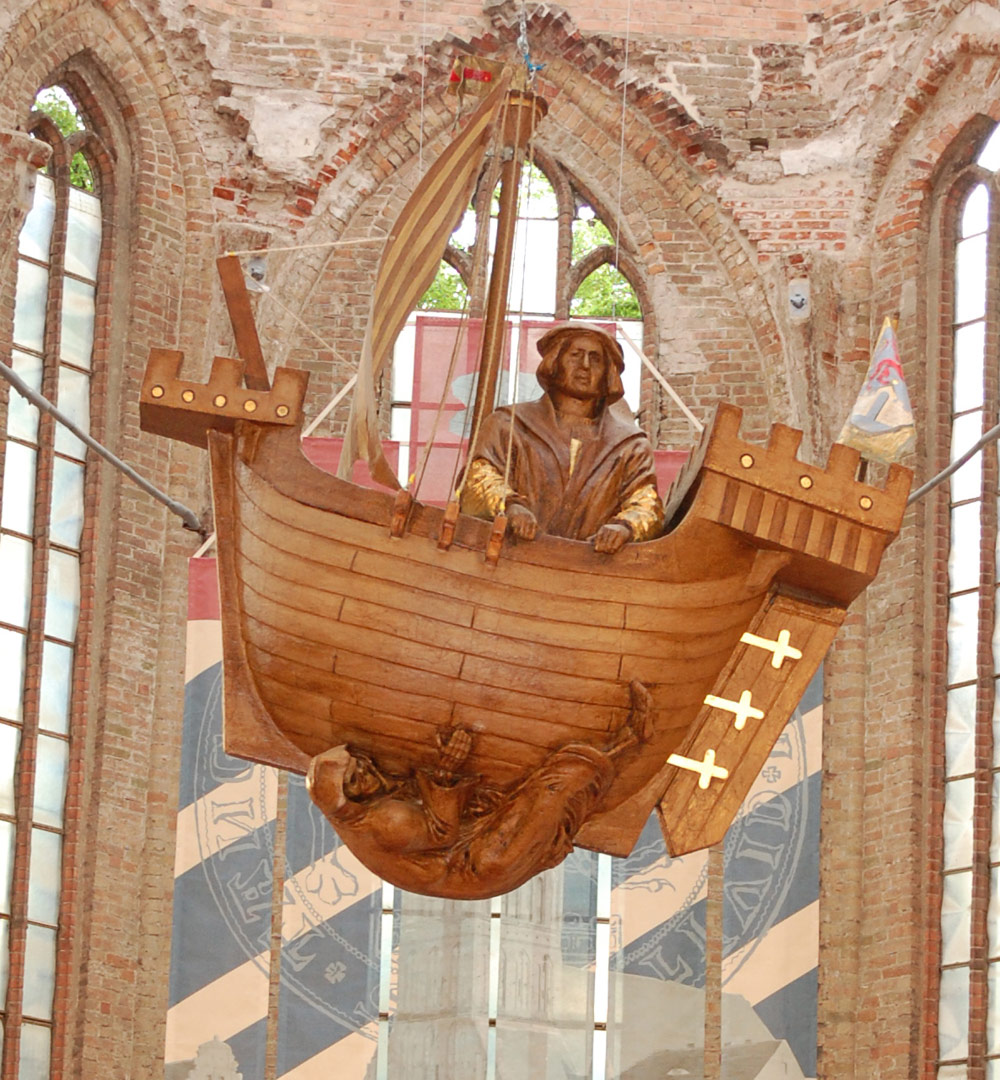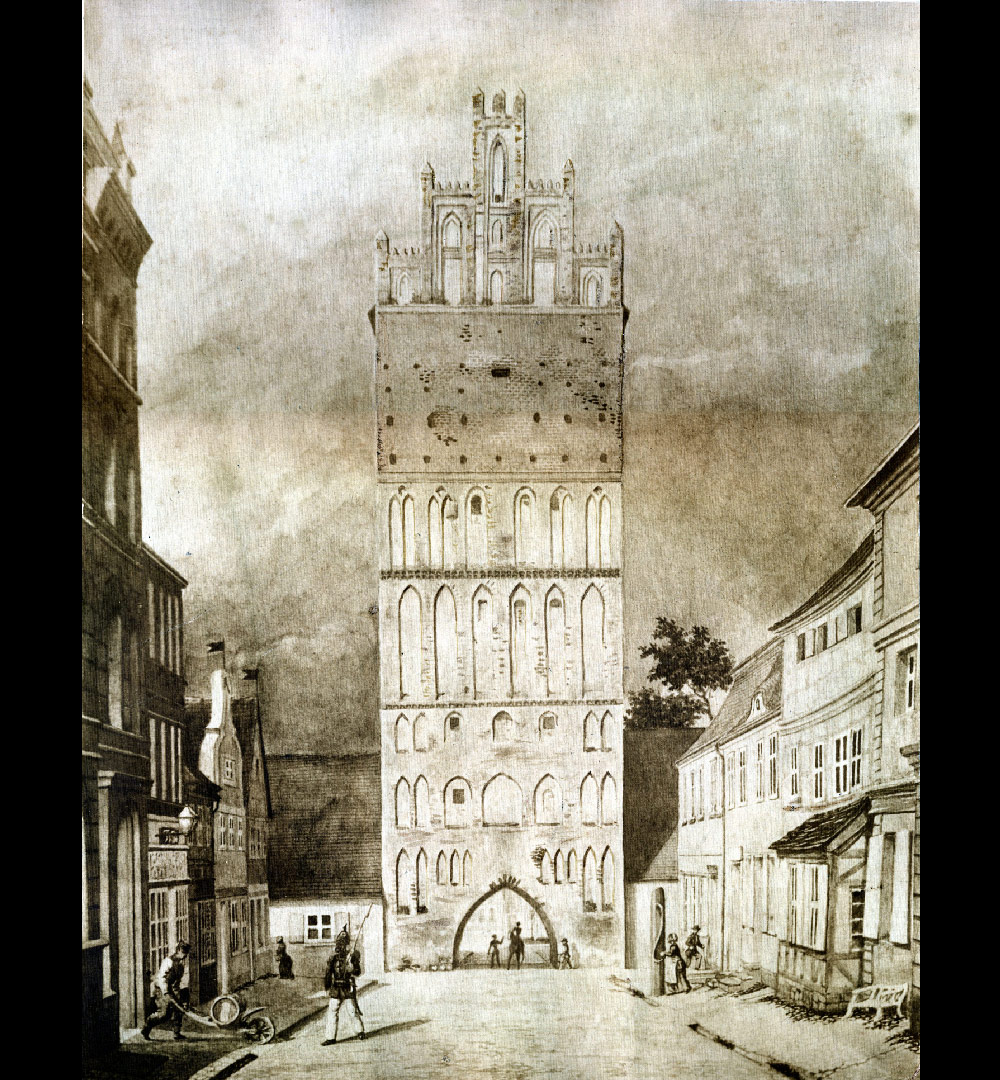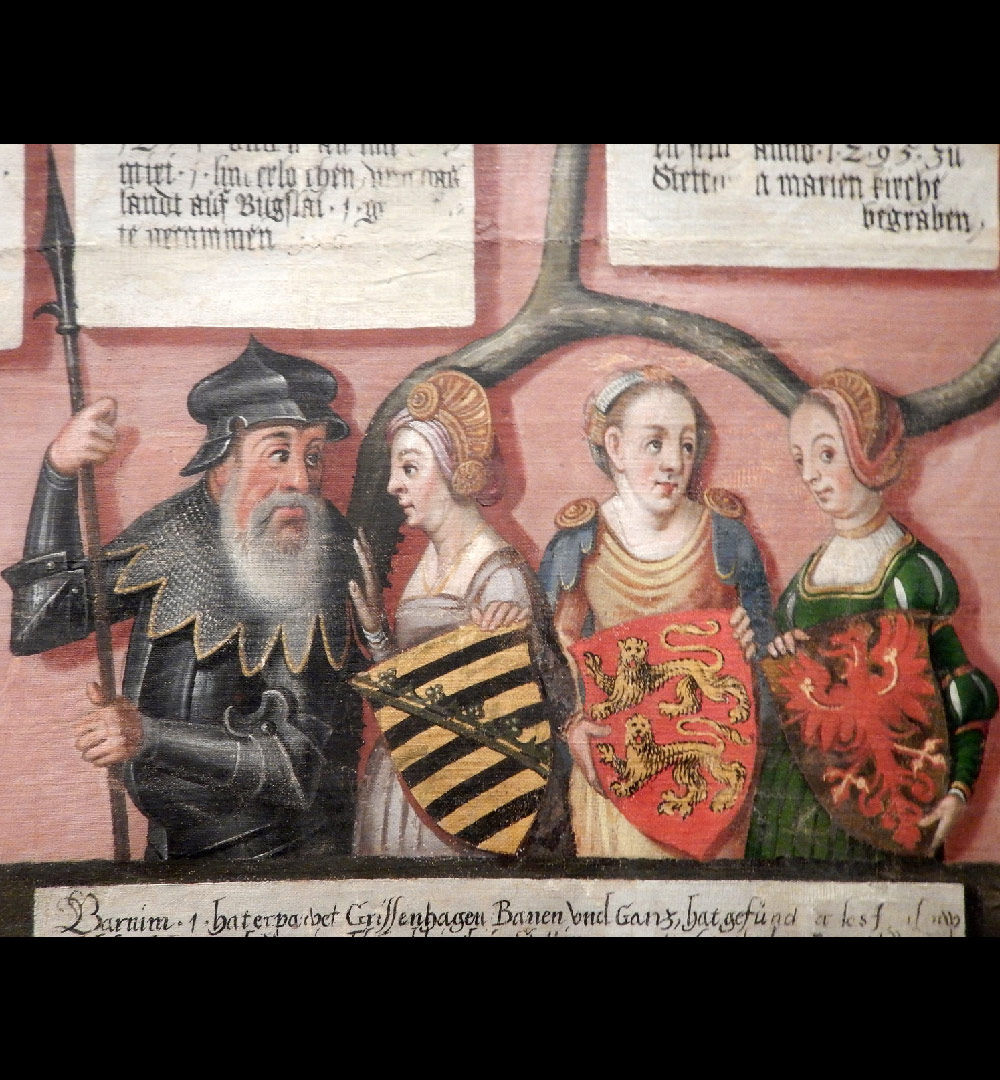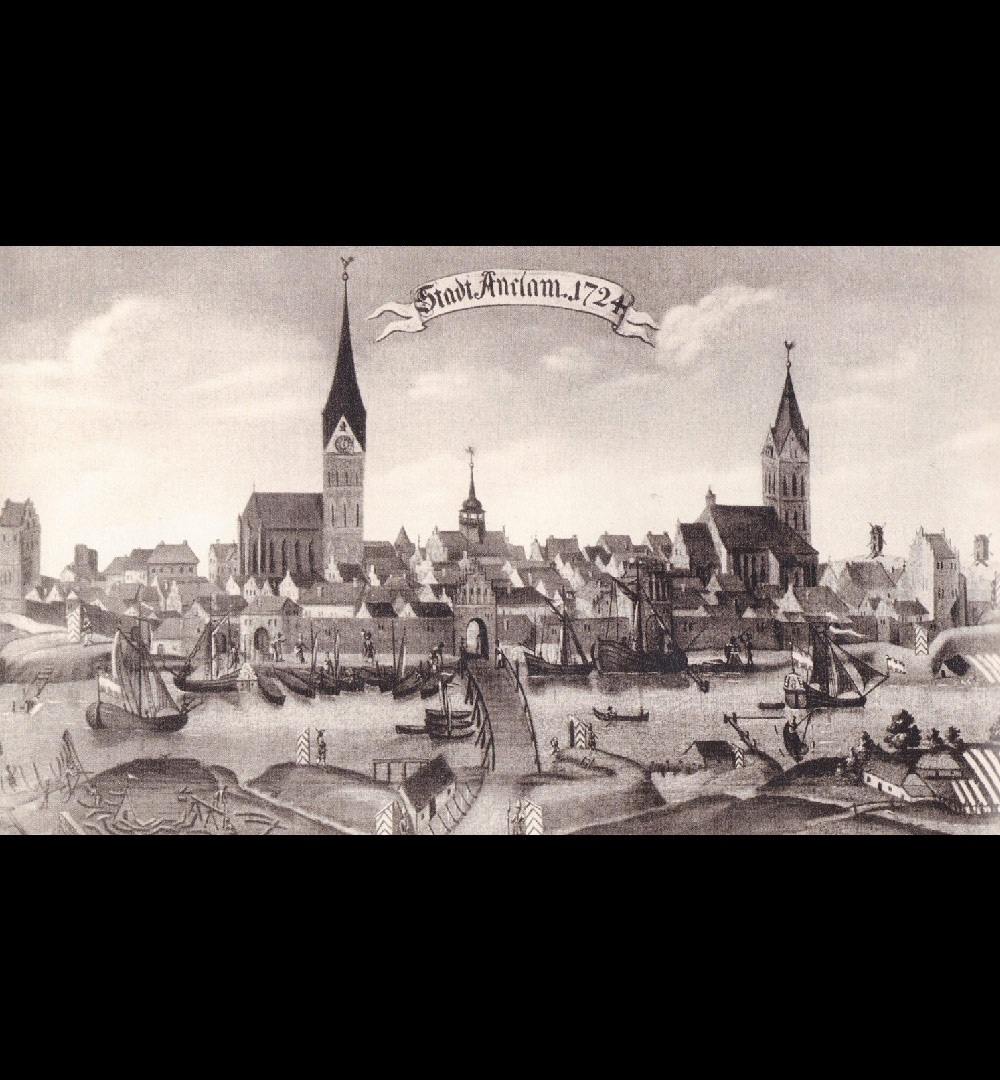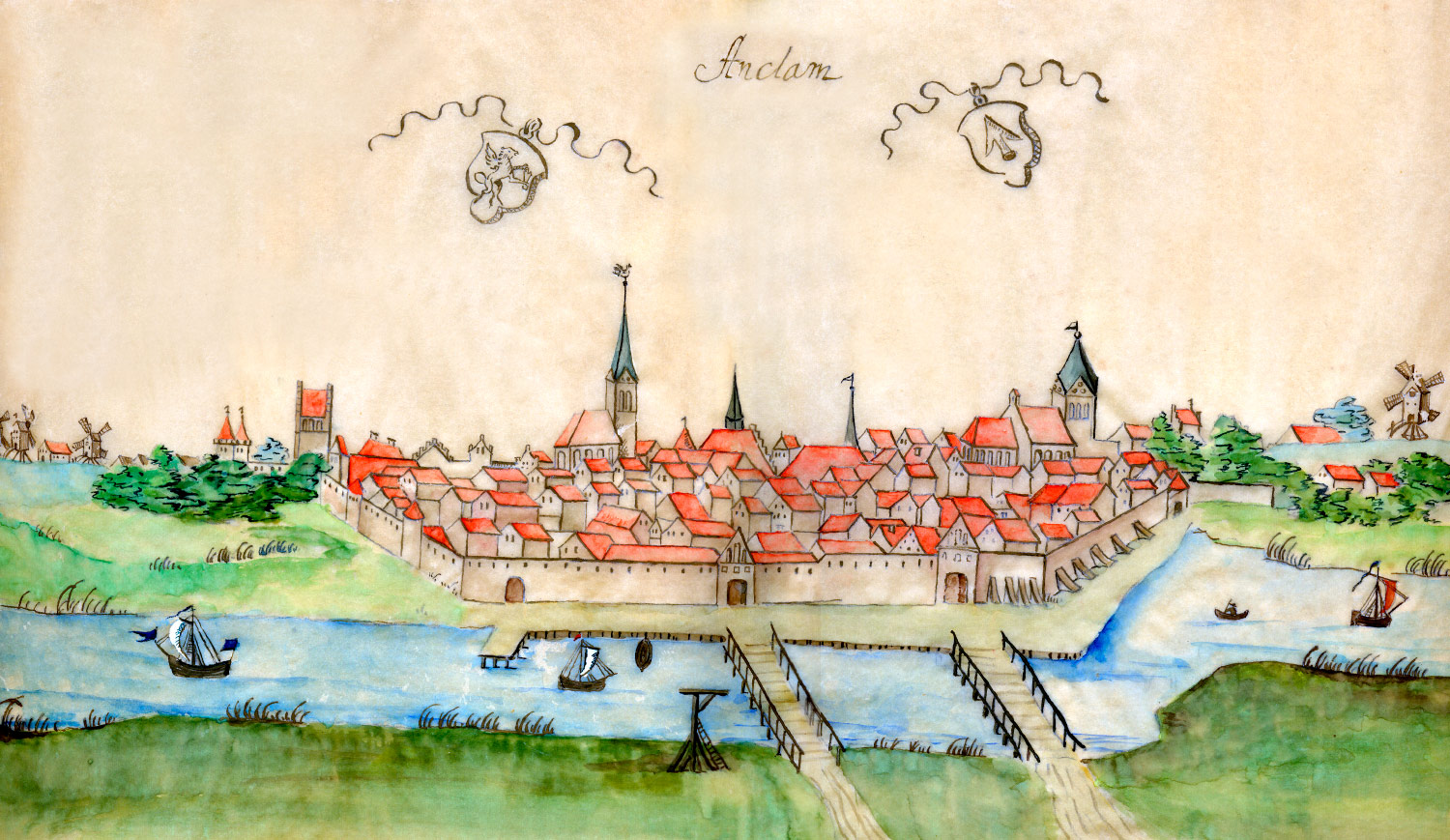
Rich (in stone) Anklam
The whole town benefited from medieval merchant trading. This can still be seen in Anklam's landmarks today: St. Mary's Church and St. Nicholas Church dominate the skyline with their high towers. They were already highly visible landmarks for sailors in the Middle Ages and are still outstanding examples of Hanseatic Gothic brickwork in the Baltic sea to this day. This also applies to the stone gate built around 1250. The 32-meter-high representative structure is the only surviving gate of the city fortification from the Middle Ages. Today, the stone gate is home to the city's history museum.
In 1995, archaeologists in Anklam made a sensational discovery. When they excavated the cellar walls of a medieval house, they came across a treasure of 2579 coins and fine jewellery. The discovery can be traced back to the period of the Thirty Years' War in the first half of the 17th century. It is believed that these items were stolen during the turmoil of the war. Perhaps the originators of the trove died of the plague, leaving their treasure untouched.
The Anklam coin treasure is now located in the museum in the stone gate.
On the occasion of an exhibition about the treasure trove in the St. Nicholas Church in 2009, the artist Norbert Folberger created the sculpture "The Ferry Man, the Merchant and Death". The work is based on a legend from Greek mythology: The ferryman brings the deceased over the river Styx to the realm of the dead. As a reward for the ferryman, a coin is placed under the tongue of the dead. Folberger's work represents a wealthy merchant who returns from his trading post to Anklam. However, death is already sailing along on the hull of the ship. It symbolizes the plague that raged in the city of Anklam, during the years the treasure was hidden.
"The Ferry Man, the Merchant and Death," Norbert Folberger, 2009
Town side of the stone gate, mid-19th century
Duke Barnim I and his three consorts from the Greifen family tree, 1598.
Town view of Anklam from the north, 1724
Anklam's protected location on the river Peene turned out to be advantageous for trade. The town had access to the Baltic Sea via the lagoon and therefor to long-distance trade, which developed enormously in the 13th century through the Hanseatic League. In 1264, Duke Barnim I freed the citizens of Anklam from any customs "so that they can sail freely and unhindered in our country." Only a few years earlier the town had been granted a town charter and economic development began with the granted rights.
In 1283, Anklam joined the Hanseatic League and allied itself with Luebeck, Wismar, Rostock, Stralsund, Greifswald, Szczecin, and Demmin. Anklam merchants exported grain from the fertile countryside. Even more profitable however, was the European trade in herring. In the town's own trading post on the Swedish Falsterbo peninsula, Anklam merchants packed fish and exported it to Central, Western and southern Europe.
